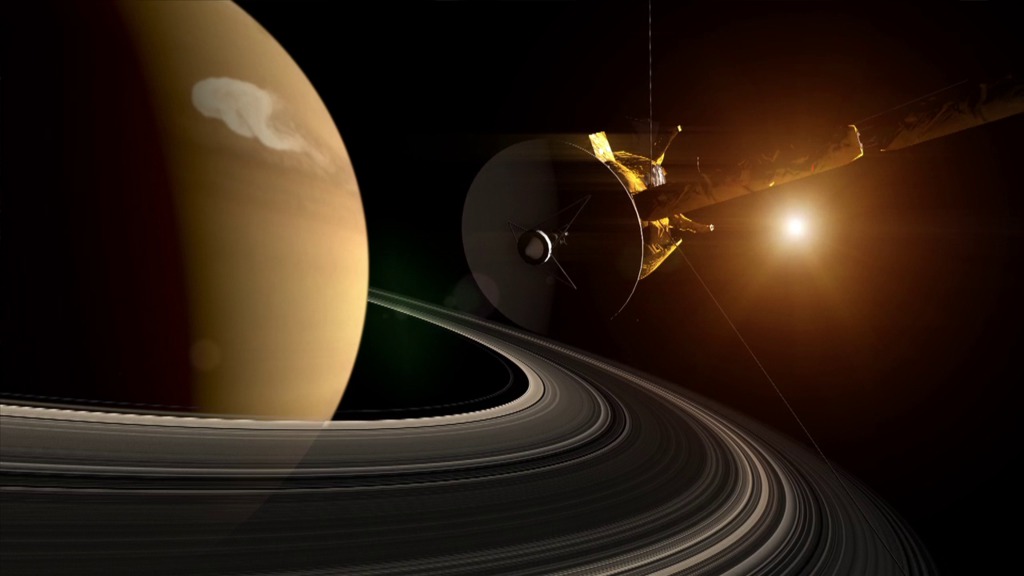Saturn's Superstorm
A spectacular storm, massive enough to be seen from Earth, erupted in Saturn's northern hemisphere in December 2010. The storm spawned bright clouds that wrapped all the way around the planet, while its powerful vortex grew larger than Jupiter's Great Red Spot. But the greatest surprises came six months after the storm began, as visible signs started to fade. That's when NASA's Cassini spacecraft and ground-based observers caught Saturn letting out an unprecedented belch of energy and releasing a huge amount of ethylene gas. The energy sent temperatures soaring in Saturn's atmosphere, a spike comparable in scale to jumping straight from deep winter in Fairbanks, Alaska, to high summer in the Mojave Desert. Scientists are still puzzled by the mysterious release of ethylene, a gas not typically observed on Saturn. Watch the videos to learn more about this rare and surprising superstorm.

Powerful effects of a record-setting storm on Saturn persist long after clouds fade.
Powerful disturbances in Saturn's upper atmosphere were revealed by studies at infrared wavelengths, where heat is sensed.
The storm spawned bright "beacons" of warmer-than-normal air. When two beacons merged, the temperature soared and an enormous vortex formed.

Three weeks after the storm erupted, it stretched 6,000 miles north to south and 11,000 miles east to west.

Crisscrossing winds sheared the storm clouds, and twelve weeks after the storm began, the clouds had wrapped around the entire planet.

If an equivalent storm took place on Earth, it would blanket most of North America top to bottom and circle the globe.

Cloud layers piled on top of one another can be seen in close-up views of the storm's front (upper left) and midsection (upper right).
For More Information
See NASA.gov
Credits
Please give credit for this item to:
NASA's Goddard Space Flight Center
Video courtesy of NASA/GSFC/JPL-Caltech
Animation courtesy of ESA/NASA/JPL-Caltech/GSFC/SSI/ESO/IRTF/C. Carreau
Images courtesy of NASA/JPL-Caltech/Space Science Institute
-
Animator
- Chris Smith (HTSI)
-
Video editor
- Dan Gallagher (USRA)
-
Interviewee
- Brigette Hesman (University of Maryland)
-
Producer
- Dan Gallagher (USRA)
-
Scientist
- Brigette Hesman (University of Maryland)
-
Videographer
- Rob Andreoli (Advocates in Manpower Management, Inc.)
-
Writer
- Elizabeth Zubritsky (ADNET Systems, Inc.)
Release date
This page was originally published on Thursday, November 15, 2012.
This page was last updated on Wednesday, May 3, 2023 at 1:52 PM EDT.
